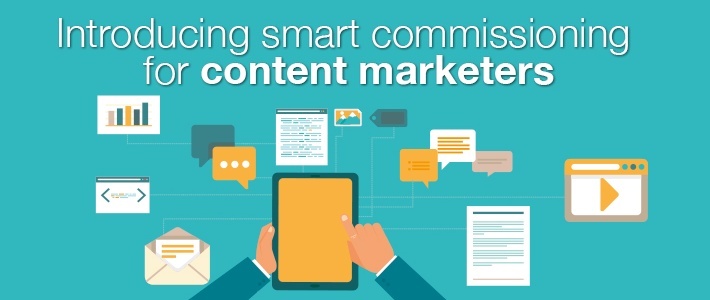A smart approach to content marketing maximises ROI by delivering the right content, in the right form, to the right people at the right time. Here’s how it works.
When Todd Wheatland was head of marketing and VP of thought leadership at Kelly Services, the global workforce solutions firm, he set his team a task. He wanted them to create 20 pieces of content from each story idea they generated. It was an intriguing, if daunting, experiment and is indicative of an approach to commissioning that is alien to a print-only view of the world of publishing.
At Grist we call this digital-first form of commissioning ‘smart commissioning’. It requires an understanding of content marketing’s true purpose. And it requires an understanding of content delivery in the internet age.
Let’s take each in turn.
The ingredients
Content marketing’s sweet spot lies at the point where your clients’ issues, opportunities and challenges intersect with your organisation’s expertise, capabilities and credibility. Into the point of overlap in this virtual Venn diagram goes intelligent content, written and delivered with purpose. Or to borrow from Craig Davis, former chief creative director at J. Walter Thompson: “We need to stop interrupting what people are interested in and be what people are interested in.”
The ideas alone are not enough, however. Smart commissioning is about delivering the right information, for sure, but it’s also about delivering it in the right form, in front of the right people and at the right time. In other words, it’s about format, distribution, timing and conversion.
Smart commissioning
Smart commissioning requires malleable content, capable of being hammered into a variety of formats without breaking. Some of those formats – social media and email, for example – double as distribution channels. All need to be matched to a desired outcome – engagement with a specific call to action.
Let’s consider some examples of smart commissioning in practice:
1. A cover feature for client magazine. The commissioning brief should include:
- Two or more box outs that will work as dedicated LinkedIn long form posts
- A core graphic that can be shared on Twitter
- An abridged version (think executive summary) of the central body copy that will work to drive click throughs from a client newsletter.
2. An interview profile. The commissioning brief, should include:
- A series of 8-10 quick fire questions and answers that would make a light and shareable blog post to be promoted on Facebook and LinkedIn
- A series of questions the interviewee is obliged to answer in 140 characters or less. Ready-made for Twitter, in other words.
3. A research report. A single piece of qualitative and quantitative research will throw up findings, insights and observations that can be sliced and diced by subject and by audience, often across both axes. So don’t just think one long report. Think modules:
- Multiple long and short form blog posts
- SlideShare presentation
- Shareable infographics.
In each of the above examples, a commissioned writer can also be asked to produce short snippets that can be used to push the content out on to appropriate social networks.
Smart commissioning means creative commissioning. It means catering for format and distribution up front to save time and maximise value further down the line.


